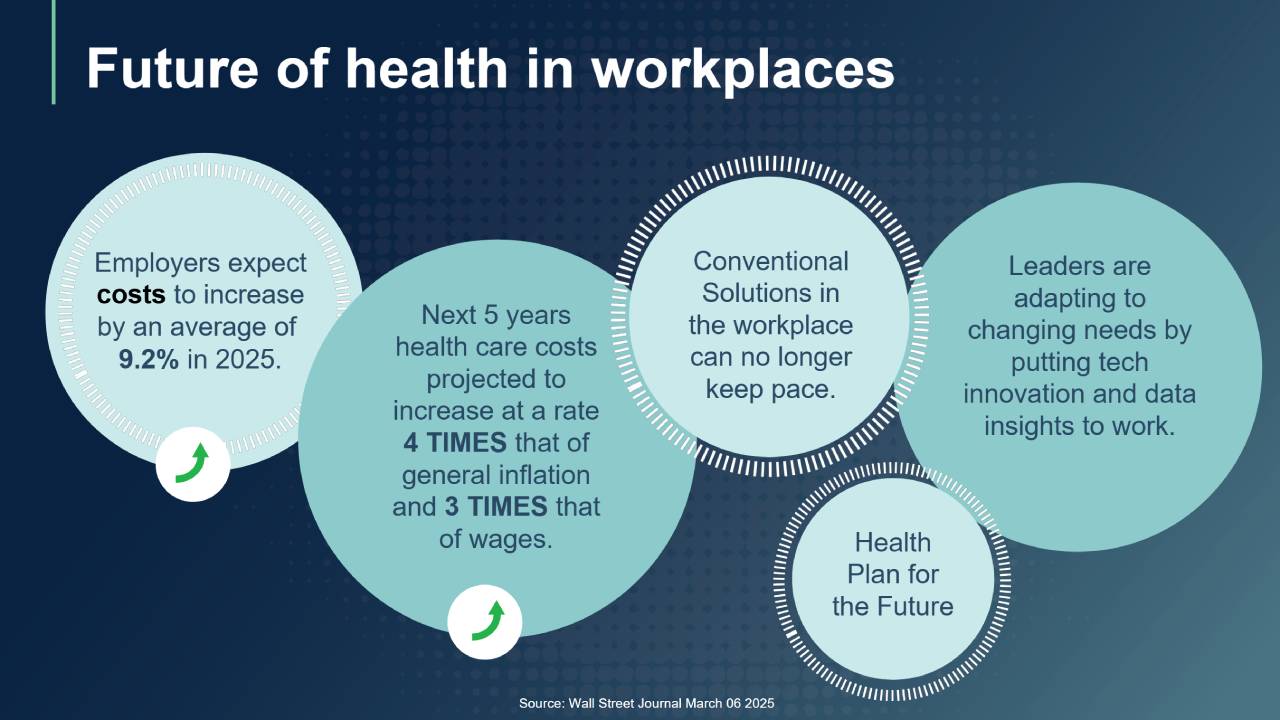
14 Aug Future of Health in Workplaces
As the world of work evolves, the way we care for employees is becoming an economic and strategic imperative.
Keeping health and workplace data in siloes is not helpful when looking at how best to manage health and wellbeing of the employees and work. It is an old way of operating. The future of health at work will depend on an integrated system to manage human risk. These systems must be easy to use, provide current data and help drive decisions.
Health and wellbeing at work has moved beyond a moral or ethical consideration. It is a business imperative. Our experience indicates that health and wellbeing is becoming even more important with the changes to legislation and employees’ risk profiles (particularly mental health).
A frustration for those who work in this area is a lack of clarity when defining “health and wellbeing in the workplace”. Many interchangeable terms are used hence the actual meaning is not always clear. This is further compounded with many interventions and devices having scant research to support their application in the workplace. This is the future.
Global standards are evolving, compliance is more arduous, legislation is changing and ESG requirements must now be woven into any businesses. All these elements are driving a more structured approach to wellbeing in the workplace.
Such changes now make organisational health and wellbeing crucial elements in responsible and sustainable business practices. Health and wellbeing must be the cornerstone of how we work, lead and ultimately succeed. And they must become part of the organisation’s fabric.
Just continually offering programs to employees in the hope that health at work will be impacted is ambitious. We know that change is linked to employee behaviours, not more programs. These behaviours become the drivers of organisational wellbeing and performance. Such behaviours will be maintained if supported by a systematic data collection, review, education and feedback process over an extended period.
Leaders in any organisation need to review health and wellbeing data as part of business performance. This data will help leaders make decisions on, resources, development and initiatives. Health and wellbeing must be visible, trackable and actionable rather than be the aspirational view of yesteryear. It can no longer be the “tack-on” or “tick-the-box” offering. It must be a fully integrated and a natural part of any business.
Given the projected changes to business and the associated increases in costs over the next few years, health and wellbeing must be measured and managed with the same vigour as traditional revenue and operational elements in the business. It must become part of how business performance is defined and achieved.
If you would enjoy an opportunity to review your health at work approaches, then contact admin@optimumhms.com.au.

